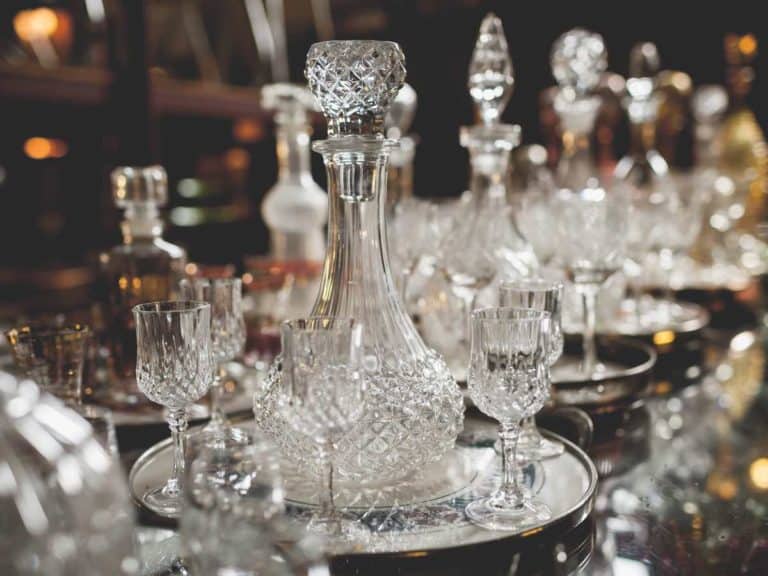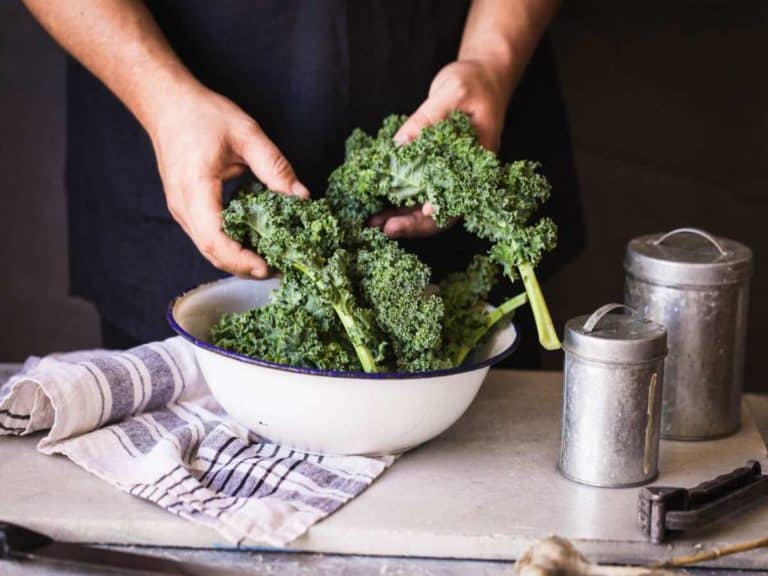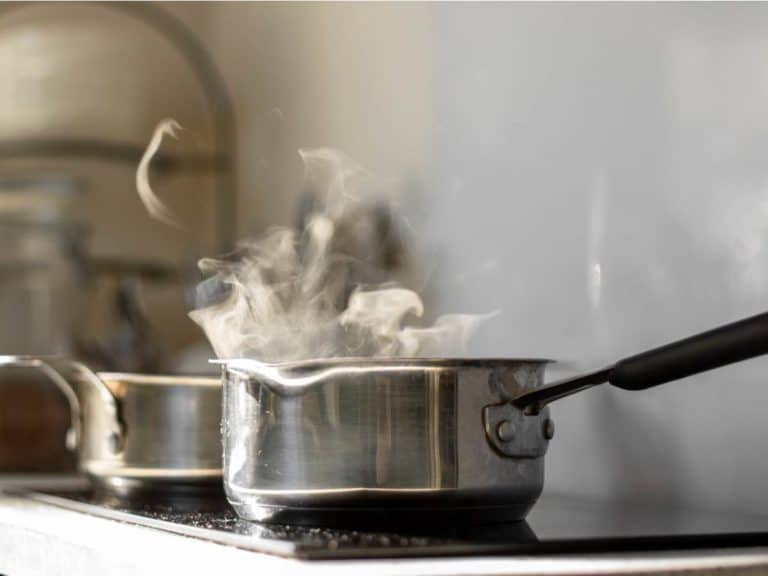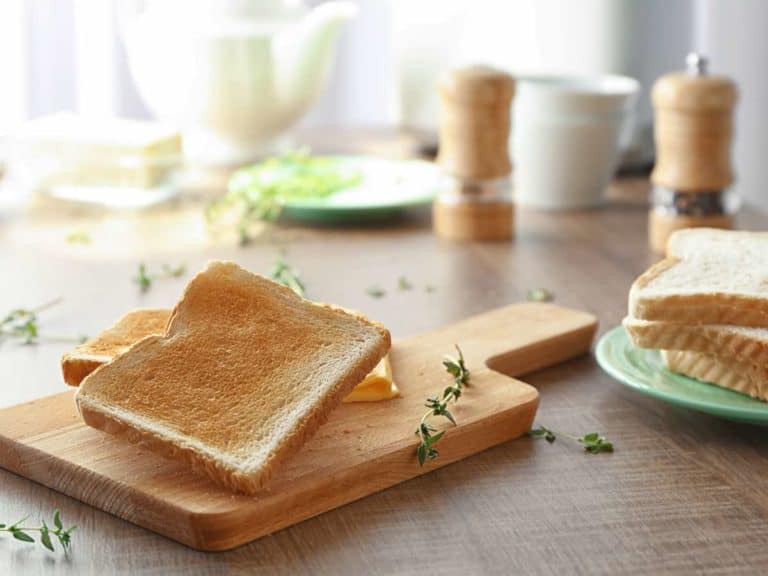Can You Eat Salmon Scales? (Or Any Other Fish)
So, your favorite supermarket sells salmon steaks with the skin and scales still intact. And now you may be wondering if they are supposed to be eaten as is or if the vendor of those expensive seafood products just wants to leave it to the consumers to skin or scale them in order to enjoy the full experience.
Provided that salmon is roasted or fried, the skin and scales can be eaten. Certain cooking methods make them crispy and delicious, which adds to the texture and flavor of the dish. Meanwhile, steaming or boiling salmon can leave the skin rubbery and the scales hard, thus making them unappetizing.
As of this writing, salmon can cost anywhere from $7.99 and $12.99 per pound. So, in other words, it’s not cheap!
Regardless if you want to get the worth of every penny that went into the purchase of that salmon steak or like to do your share in saving the environment by cutting your food waste, don’t stop reading now.
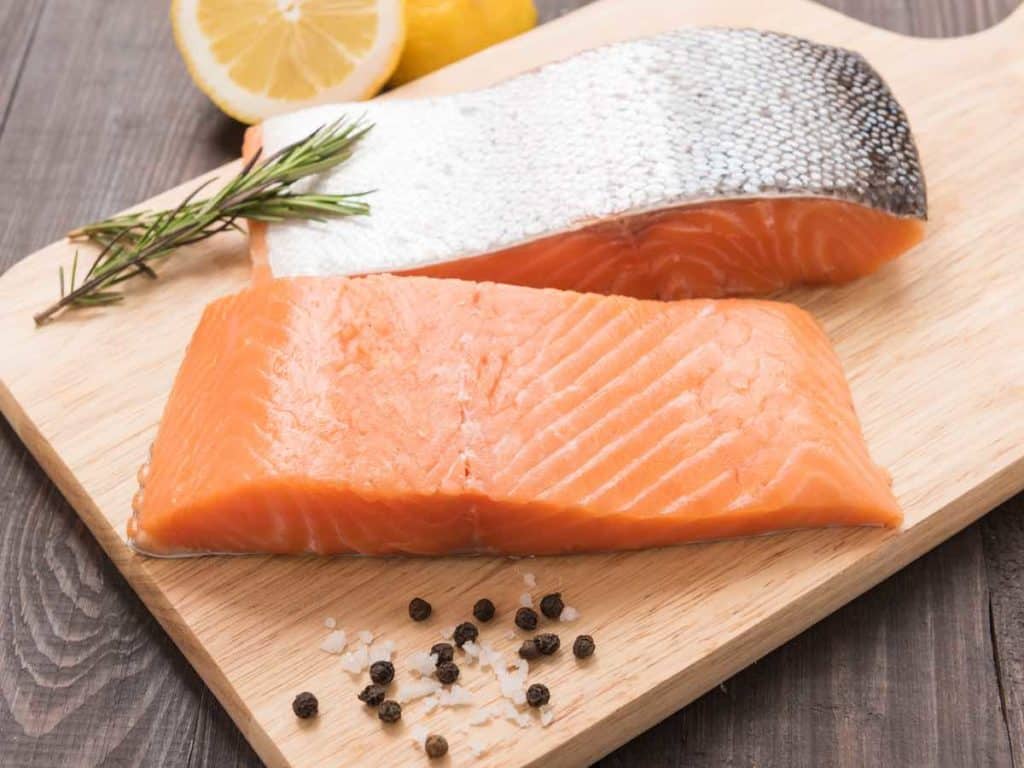
Can You Eat Fish Skin
Fish skin can be eaten, especially if it’s the skin of a small or medium-sized fish with very small and/or soft scales. As a matter of fact, there are plenty of crispy skin fish recipes online, many of which involve salmon skin as the main ingredient. Before frying, some recipes require fish skin to be dried.
Unlike hard winter squashes and various tropical fruits, it’s not all the time that fish has to be skinned or scaled prior to being cooked — in most instances, there is no need to skin and scale fish beforehand.
Proof of this is the fact that fish skin can be eaten, and there are tons of crispy fish skin recipes out there.
Very small fish types, in particular, have skin that can be eaten trouble-free — no matter if steamed, boiled, baked, grilled or fried, you can enjoy them with their skin intact.
Many medium-sized fish, including salmon, of course, have skin that becomes edible when cooked, even if they are kind of thick.
Related Article: Can You Eat Shrimp Shells
However, they are best grilled or fried in order to make their skin, as well as scales, palatable. Other cooking methods, especially steaming and boiling, can make fish skin soggy and rubbery, making them unappetizing.
When it comes to eating fish skin, cooking it the right way is everything!
Typically, the skin of very large fish is not eaten because of the obvious fact that they can be thick and tough — in many instances, no amount of cooking can make them easy to eat.
That is why it’s not unlikely for a recipe that calls for the use of a massive fish to instruct you to skin and/or scale the seafood beforehand.
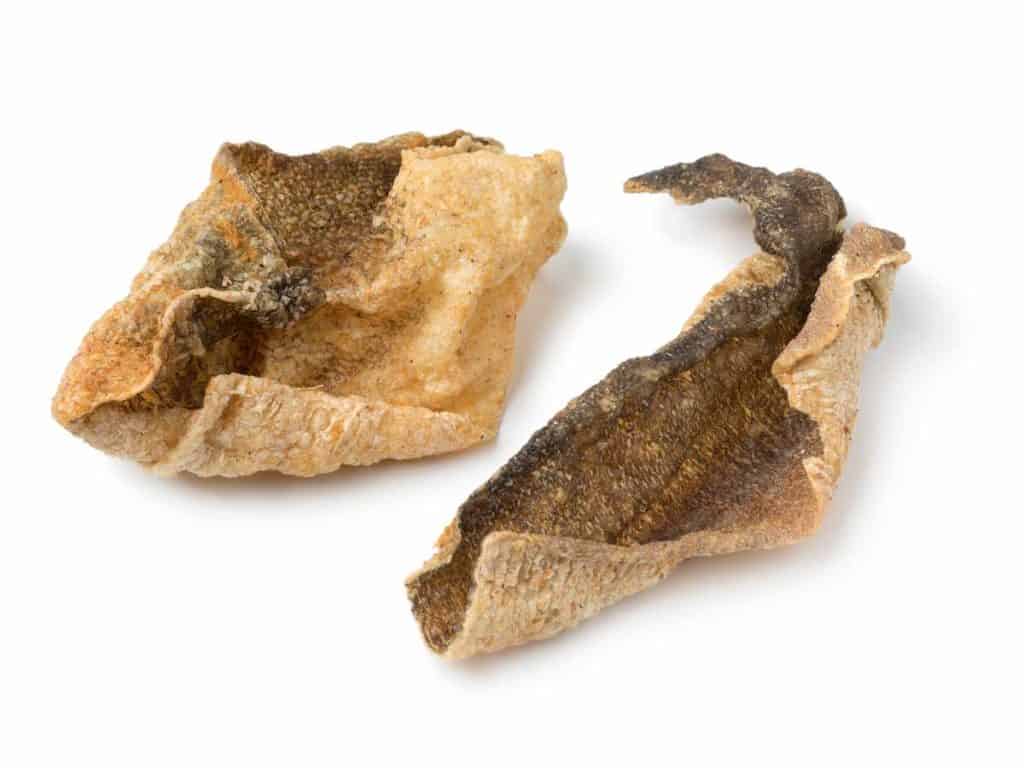
Are Salmon Scales Nutritious?
Both salmon skin and scales contain nutrients that may benefit the health in various ways. For instance, salmon skin is rich in omega-3 fatty acids, which, according to health experts, may fend off heart disease. Meanwhile, salmon scales contain collagen, which is good for the skin and joints, and calcium, too.
Especially when roasted or fried very well, the crunchiness and tastiness of the skin and scales of salmon may help level up the experience of enjoying the luxurious seafood.
But it’s not just your senses that can benefit from eating them but also your health.
According to scientists, salmon skin is a rich source of omega-3 fatty acids that may lower blood pressure, bad cholesterol levels and risk for blood clots. It’s because of this why omega-3 fatty acids may help reduce your risk of having a heart attack, stroke and heart disease, all of which can be very deadly.
Studies show that omega-3 fatty acids may also help prevent certain forms of cancer as well as improve some mental health disorders, which means that the consumption of salmon skin may lower anxiety and depression.
Beauty-conscious people rejoice — salmon scales contain collagen that helps fight wrinkles!
However, that’s not the only perk that you can get from collagen found abundantly in salmon scales. Scientists agree that it may also help improve muscle and bone mass and relieve joint pain and inflammation.
As mentioned earlier, salmon scales also have calcium. We all know that this mineral is essential for keeping the bones and teeth strong. What’s more, it helps in the proper functioning of the muscles, heart and nerves.
When You Should Remove the Fish Scales
In some instances, removing salmon skin and scales is necessary. Certain recipes that require marinating salmon for a while may require skinning and scaling in order for the ingredients to be able to penetrate salmon. Large fish types with tough skin and big and hard scales should be skinned and scaled, too.
Just because you can eat salmon skin and scales doesn’t mean you should keep them intact all the time.
Salmon recipes that call for marinating, more often than not, will require the seafood to be skinned or scaled beforehand. That’s because they can keep the marinade from penetrating the flesh in order to impart its flavor.
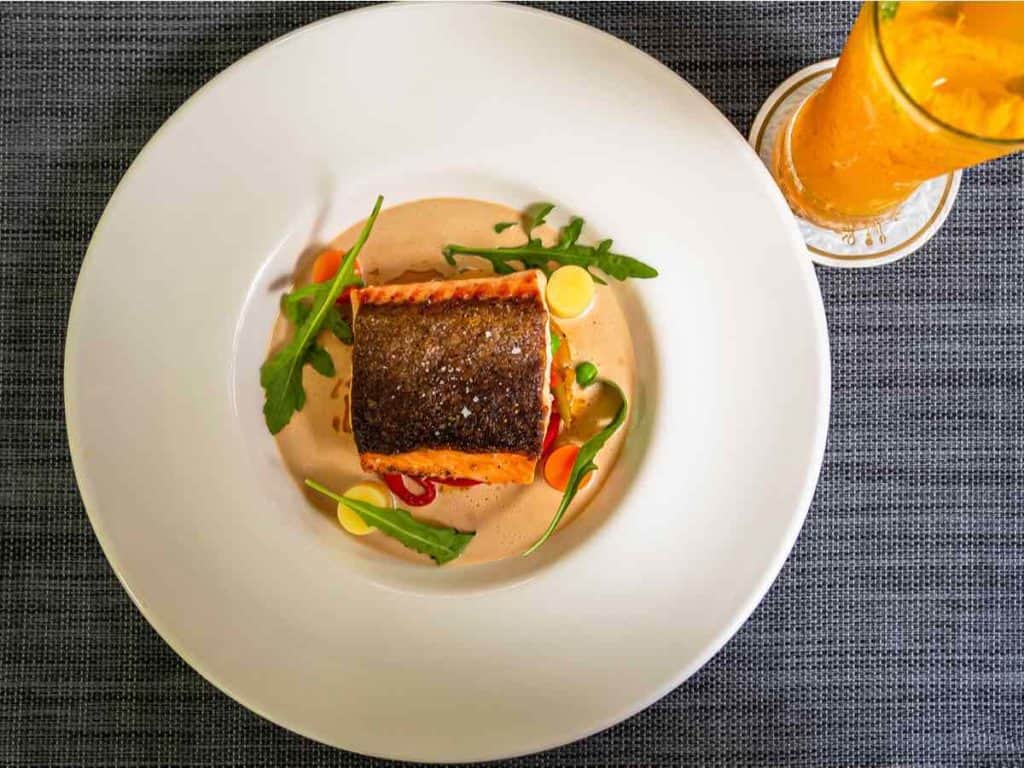
The skin and scales of salmon as well as other fish are the first lines of defense of their bodies against microbes and toxins. Due to this, it’s not unlikely for them to be contaminated. This is why both skin and scales should be removed if they are slimy and smelly — it can keep the seafood from going bad faster than usual.
Large fish tend to have thick and tough skin and big and hard scales, too. And no amount of roasting and frying can make them crunchy and delicious. Needless to say, skinning and scaling have to be done in some instances.
New to cooking fish? Fret not! That’s because the vast majority of seafood recipes online will tell you whether or not you should get rid of the skin and/or scales before proceeding with the steps. It’s also in cyberspace where you can easily come across video tutorials on properly skinning and scaling all kinds of fish, not just salmon.
Just Before You Eat Salmon Scales
Yes, you can eat salmon skin and scales provided that you choose the cooking method well — roasting or frying salmon causes both its skin and scales to become crispy and delicious, thus allowing them to enhance the recipe. Consuming them also enables you to take advantage of the health-giving nutrients they contain.
Sometimes, however, large salmon scales may fail to become crunchy when the seafood is roasted or fried. In this case, it’s a much better idea to scale the product in order to prevent compromising the dish and the experience of eating it.
Fish with large scales and tough skin such as bass, mullet, herring and sole should also be skinned and scaled.
In some instances, skinning and scaling have to be done even if the fish has small scales and tender skin if it’s necessary for you to be able to clean the seafood properly or if the recipe calls for it. Needless to say, whether or not you should not remove the skin and scales of the fish is a case-to-case basis.
Related Questions
Can you eat salmon raw?
Salmon can be eaten raw only if it’s from a reliable, high-quality grocery where the perishable products are guaranteed to be prepared and stored properly. Otherwise, it’s a good idea to cook salmon very well before consuming it in order to destroy any bacteria, parasites and toxins that can cause health problems.
Is cooked salmon supposed to be pink inside?
Salmon that is cooked properly and thoroughly is opaque pinkish white on the outside and translucent pink on the inside. If salmon is still dark pink on the outside, it’s still raw and requires more cooking time. On the other hand, salmon is overcooked if it’s already opaque light pink on the inside.
Related Article: How To Safely Store Fish: Cooked and Fresh
